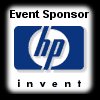| Speaker Name |
Vamsi Krishna S |
| Company |
IBM |
| Talk Title |
Debugging with Dynamic Probes |
| Track |
/dev/system |
| Class |
Advance |
| Scope |
Technical |
| Synopsis |
This talk covers rationale behind IBM's Dynamic Probes,
touches its implementation (how does it work) briefly and explains its
usage. More details about DProbes can be found at
http://oss.software.ibm.com/developerworks/opensource/linux/projects/dprobes/
DProbes is a generic and pervasive system debugging facility that will
operate under the most extreme software conditions with minimal system
disruption. It permits debugging of some of the most difficult types
of
software problem especially those encountered in a production
environment
that will not readily re-create. It is also an invaluable aid for the
developer who has to debug parts of the operating system inaccessible
to
other technologies.
The core of DProbes comprises a fully automated breakpoint or
"probepoint"
mechanism (also referred to as a tracepoint in the context of dynamic
tracing). Probepoints may be inserted anywhere within system and user
space code. They are global by definition, that is they are defined
relative to
a module not to a storage address or process. Each probepoint has an
associated Reverse Polish Notation program (RPN) that is interpreted
when
the probe fires. The RPN instructions allow memory and CPU registers
to be
examined and altered using conditional logic.
|
| Points |
What is Dynamic Probes
Dprobes components
What is a probepoint
probepoint specification
RPN interpreter
RPN instruction categories
RPN invoked external facilities
Example program
Dprobes application
What's next
|
| Speaker Profile |
I have done B.E.(Hons) in Electrical and Electronics from
BITS, filesystem mainly debugging and fixing customer-reported
problems/defects. In the last two years, I have been working on
developing debugging tools in the Linux Kernel.
Pilani. I have been working for IBM since 1995, mainly in the
areas of Operating Systems. I have worked on the OS/2 kernel and
|
 Click here
to download the slides. Click here
to download the slides.
1376 Downloads.
|

























